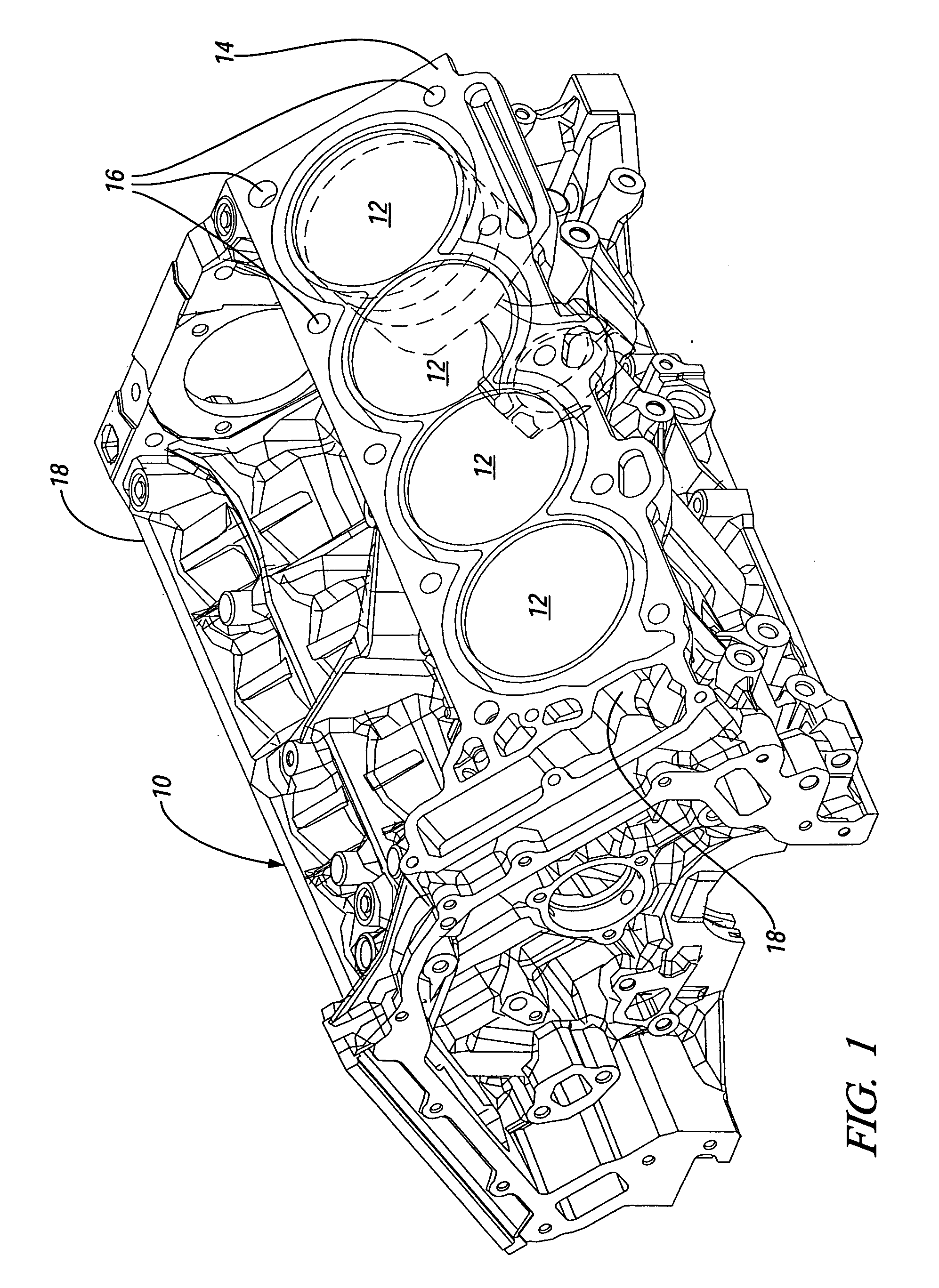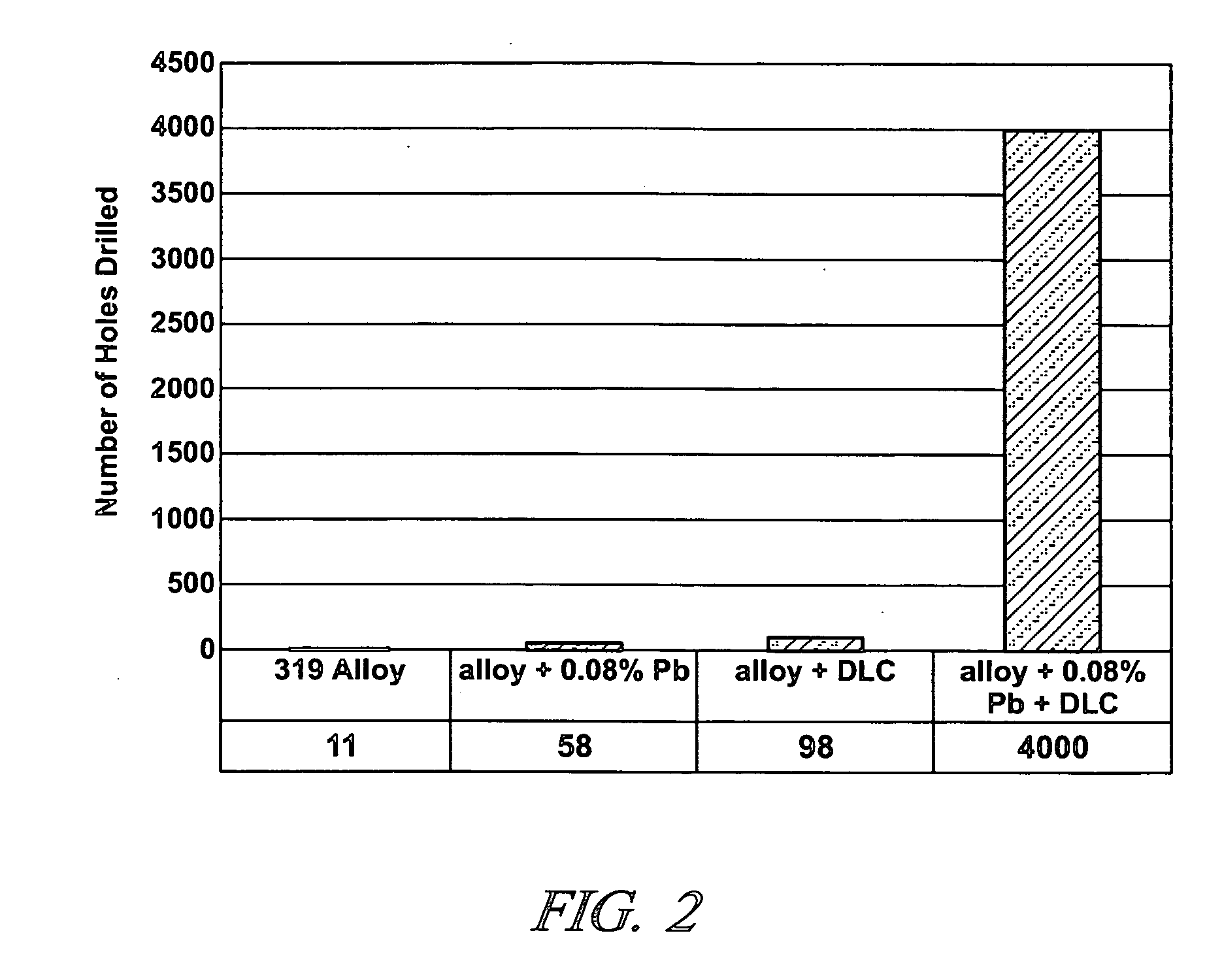Dry machining of soft metal-modified aluminum castings with carbon-coated tools
a technology of soft metal modification and carbon coating, which is applied in the field of dry machining of soft metal modification aluminum castings with carbon coating tools, can solve the problems of relative high silicon content of aluminum casting alloys, increased difficulty in machined, and insoluble lubricity-imparting additives, etc., and achieves the effect of not damage to parts
- Summary
- Abstract
- Description
- Claims
- Application Information
AI Technical Summary
Benefits of technology
Problems solved by technology
Method used
Image
Examples
Embodiment Construction
[0014] This invention is applicable, for example, in making cast parts in large volume for automotive applications. Vehicle engine and transmission parts are examples of such parts. Most automotive castings require some machining to produce surfaces to a shape and / or dimensional specification. The machining requires the use of high quality and expensive cutting tools such as drills, reamers and milling and honing tools. Heretofore the machining has also required the use of machining fluids for part and tool protection. The machining practices have required close management to produce high quality cast parts with good tool life and related management of machining costs.
[0015] This invention is applicable to the making of cast aluminum parts and enables dry machining of surfaces of the casting without uneconomical reduction of cutting tool life. Cast aluminum parts are made from many known casting alloys. Among those commonly used for automobile parts are, for example, Aluminum Alloy...
PUM
| Property | Measurement | Unit |
|---|---|---|
| temperature | aaaaa | aaaaa |
| speed | aaaaa | aaaaa |
| speed | aaaaa | aaaaa |
Abstract
Description
Claims
Application Information
 Login to View More
Login to View More - R&D
- Intellectual Property
- Life Sciences
- Materials
- Tech Scout
- Unparalleled Data Quality
- Higher Quality Content
- 60% Fewer Hallucinations
Browse by: Latest US Patents, China's latest patents, Technical Efficacy Thesaurus, Application Domain, Technology Topic, Popular Technical Reports.
© 2025 PatSnap. All rights reserved.Legal|Privacy policy|Modern Slavery Act Transparency Statement|Sitemap|About US| Contact US: help@patsnap.com



